|
Locations in
Bennett's Novels
|
Many of the locations
in Clayhanger and other Bennett novels based in "The five
towns" correspond to actual locations
in and around
the Potteries district of North Staffordshire, especially in Burslem
- which is the focus of many of his novels.
Some of these
locations and buildings
are set out below. |
Towns
and villages:
|
Bleakridge: |
Cobridge,
once a relatively exclusive suburb, between Burslem and Hanley.
Bennett lived in Cobridge with his parents. |
|
Bursley |
Burslem -
the 'Mother Town' of the Potteries, most of Bennett's 'Five Towns'
novels are set in Burslem. [ on Bennett's Burslem]
on Bennett's Burslem] |
|
Hanbridge: |
Hanley -
the 'Chicago' of the Potteries. Bennett was born in Hanley in 1867.
[ on Bennett's Hanley]
on Bennett's Hanley] |
|
Hillport: |
Porthill |
| Knype:
|
The town of
Stoke-upon-Trent (not to be confused with the city of Stoke-on-Trent,
of which Stoke is one of the six towns).
[ on Bennett's Stoke]
on Bennett's Stoke] |
|
Longshaw: |
Longton
[ on Bennett's Longton]
on Bennett's Longton] |
| Mow
Cop: |
A hill to
the north of the Potteries, on the Staffordshire / Cheshire border.
The site of the early Primitive Methodist camp meetings. |
|
Oldcastle: |
Newcastle-under-Lyme
(the "seventh" town) |
|
Shawport:
|
Longport |
|
Toft End:
|
Sneyd Green, south east
of Burslem |
|
Turnhill:
|
Tunstall
[ on Bennett's Tunstall]
on Bennett's Tunstall] |
| Fenton: |
Read
the reason Bennett gives for 'forgetting' Fenton [ ] ] |
Buildings:
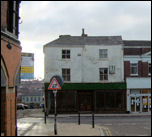 |
John Baines' Shop
At the bottom of St. John's Square |
|
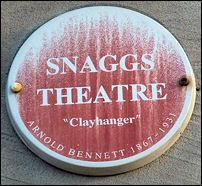
|
Blood Tub:
A wooden theatre - the
site of
Bennett's Blood
Tub corresponds to that of the Wedgwood Theatre
Royal, which
stood in Wedgwood Place. |
| |
Cauldon Bar Ironworks:
The
Shelton Bar iron and steelworks,
which was in
Etruria valley to the west of Hanley
|
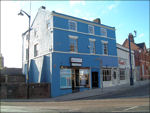 |
Clayhanger's printing works:
Bennett's
description of the Clayhanger house, shop and printing works may have
been based on a building which still stands on the south side of Swan
Square, Burslem, at the corner of Queen Street and Waterloo Road. |
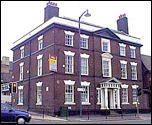 |
Conservative Club:
The actual
building is 'The Big House' top of Swan Square. |
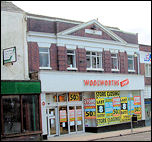 |
Critchlow's Chemist Shop:
At the
bottom of St. John's Square |
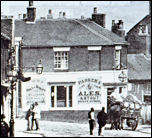 |
Dragon Hotel:
The George
Hotel on the corner of Nile Street and Waterloo Road. |
 |
Duck Inn:
The
Swan Inn, Swan Square, Burslem. |
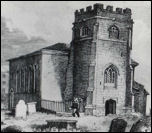 |
St. Luke's Church:
Corresponds St
John the Baptist Church, Burslem. |
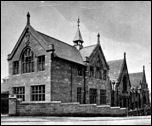 |
Oldcastle Middle School:
Orme's Boys' School in Newcastle-under-Lyme. |
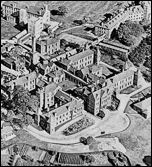 |
Pirehill Infirmary:
The North Staffordshire
Royal Infirmary, Hartshill. |
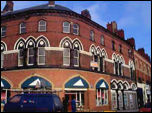 |
Povey's Confectioners Shop:
Daniel Povey's
Confectioners Shop in Queen's Street, Burslem. |
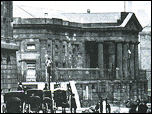 |
Shambles:
Burslem's
former meat market in Market Place. |
| |
St Luke's covered
market:
The
first covered market in Burslem stood in
the market place
to the east of the town hall.
|
| |
Sytch
Pottery:
Corresponds
to Samuel Alcock & Co's Hill Top Pottery, in Burslem, at the top of
Sytch Bank. A Georgian building, now demolished. Bennett wrote to the
Staffordshire Sentinel (19 March 1909) to protest about the
boarding-up of the window.
|
 |
The
Tiger:
The Leopard
public house in Market Street, Burslem - it was opposite the Town
Hall. |
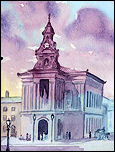 |
Town Hall:
Built in
1854 Burslem's second town hall was in Market Place, next to the
'Shambles' meat market. |
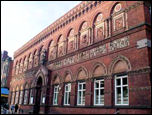 |
The School of Art:
Queen's
Street, Burslem |
Streets & Locations:
|
Aboukir Road: |
Nile Street, Burslem |
|
Bugg's Gutter: |
Clayhanger Street, Burslem |
|
Cock Yard: |
Brickhouse Street,
Burslem |
|
Duck Square:
|
Swan Square, Burslem. |
|
Knype and Mersey Canal:
|
Trent and Mersey Canal,
which flows to the
west of Burslem |
| Manor
Farm: |
The Grange
Farm (now a park) lay immediately to the south of Burslem |
|
Moorthorne Road: |
Moorland Road, Burslem |
| Oak
Street: |
Elm Street,
Cobridge |
|
Playground: |
The old
playground lay opposite the junction of Wedgwood Place and Overhouse
Street, Burslem |
| St
Luke's Square: |
St John's
Square, Burslem. |
|
Wedgwood Street: |
Queen
Street, Burslem |
|
Woodisun Bank:
|
Bourne's Bank, Burslem. |
For further
guidance consult Studies in the sources of Arnold Bennett's
novels by Louis Tillier (Didier, Paris 1949), and Arnold Bennett
and Stoke-on-Trent by E. J. D. Warrilow (Etruscan Publications, 1966).
 |
![]() | Bennett Index |
| Bennett Index |![]()
![]()
![]() see also: Bennett's
life in the Potteries
see also: Bennett's
life in the Potteries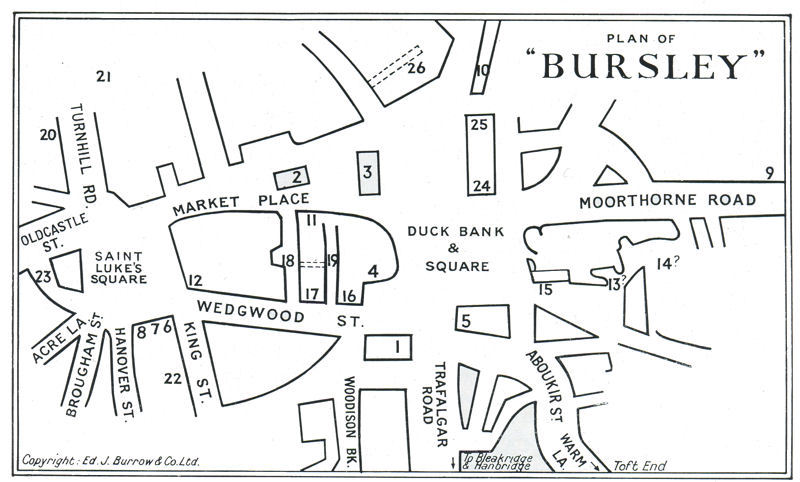

![]()
![]()
![]() see also: Bennett's
life in the Potteries
see also: Bennett's
life in the Potteries